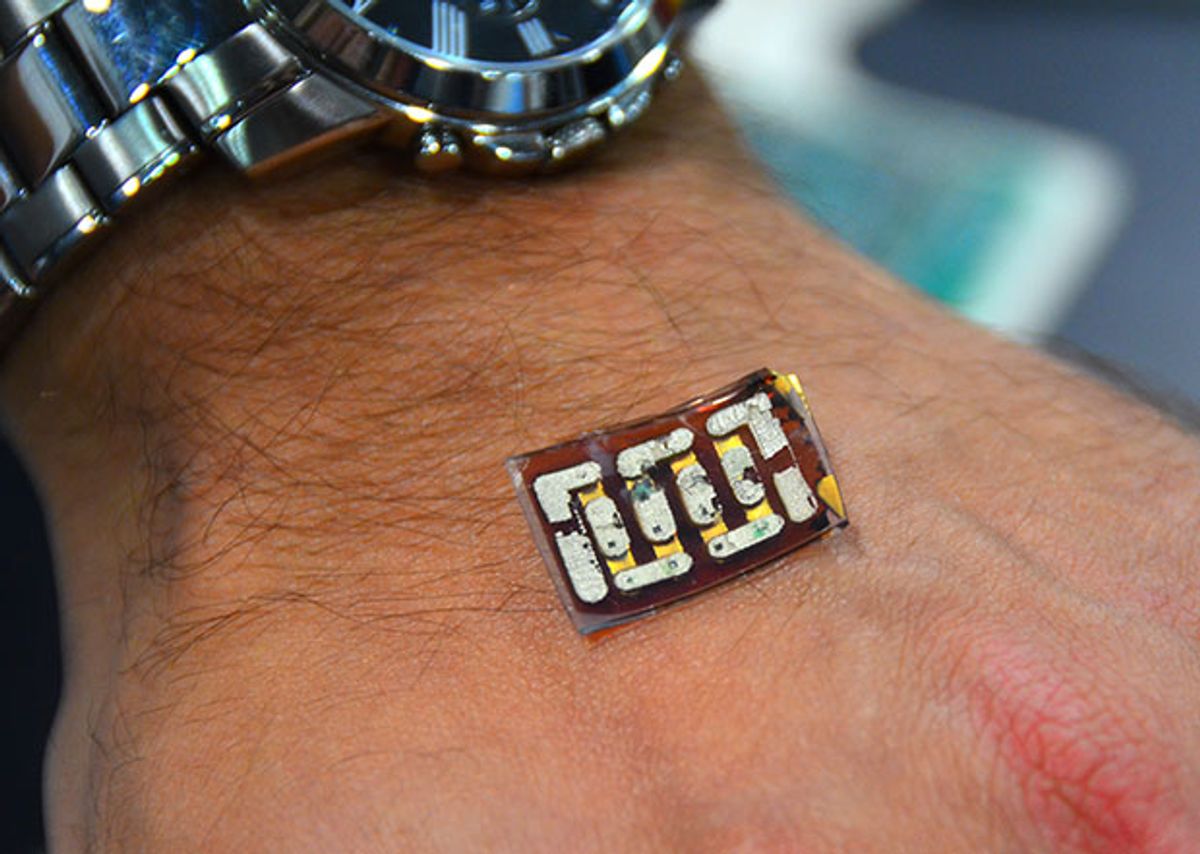In theory, wearable electronics are great. In practice, they’re great—until you have to charge them, at which point they become annoying. We're counting on wireless power to come along and save us all, but in the meantime, there are other creative ways to keep lower power devices running. At CES last week, we saw a prototype of a wireless sensor patch that can monitor your hydration levels and send data to your phone, while getting all the power it needs from your own body heat.
Any kind of energy gradient can potentially be used as a power source, and most of the time, your body provides its own energy gradient by being warmer than the ambient air. Thermoelectric materials can leverage this, turning the temperature difference directly into useful amounts of electricity. Researchers at North Carolina State University’s Center for Advanced Self-Powered Systems of Integrated Sensors (ASSIST)—an NSF-sponsored nanosystems engineering research center—have been developing flexible thermoelectric generator (TEG) power-harvesting wearables, including the prototype sensor in the picture above.
This tiny, flexible sticker, about 7 square centimeters in size, can produce between 40 and 50 microwatts of electricity per square centimeter as long as it's stuck to your skin. This occurs thanks to an array of flexible TEGs wired in series. The amount of power is based on the temperature difference between your skin and the air; the 40-50 microwatt per cm2 output range comes from a difference of just 3 degrees Celsius—with no heatsink or airflow across the generator. If you add airflow into the mix (say, if you're walking or jogging), the generator is much more efficient, producing around three times as much power.
A wearable patch like this is never going to produce enough energy to run a display or power a GPS or anything like that. But it's fully capable of running a low power processor along with sensors such as accelerometers, an EKG monitor, temperature sensors, pressure sensors, or hydration monitors. Integrated wireless is also in the works: Researchers are developing an ultra low-power Bluetooth standard for data communication, allowing the patch to talk to your phone. This kind of feature is what differentiates ASSIST's wearable sensors from some of the other wearable sensors we saw at CES. Because the sensor has all the power it needs, it can provide data without you having to interact with it at all.
The goal here is to create small self-powered wearable sensors that you don't have to take off (or even think about) for up to a year. At ASSIST, they're currently focused on squeezing as much power as they can out of their flexible TEGs without sacrificing flexibility or durability, which is a tricky materials science challenge to solve. They told IEEE Spectrum that they're getting close to the point where they can reliably make dozens or hundreds of these sensor patches. Next, they'll be looking for an industry partner to license the tech for mass production.
Evan Ackerman is a senior editor at IEEE Spectrum. Since 2007, he has written over 6,000 articles on robotics and technology. He has a degree in Martian geology and is excellent at playing bagpipes.



